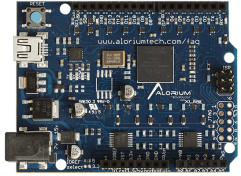Seeing is Believing
Many readers will be aware that I am not, unlike my colleagues here at Elektor, a trained engineer. I have certainly been surprised by many things since I started work here over ten years ago with Ernst Krempelsauer. One concept that’s always fascinated me is the seemingly limitless potential of FPGAs. Engineers can describe a system in software and with the click of a mouse button...
After ten years as an editor at Elektor I still think the potential of FPGAs is far from being exhausted. I for one would like to see many more (Elektor) projects based on the technology. Maybe many semi-professional engineers have not really warmed to the idea of learning yet another language such as VHDL or Verilog.
A board like the XLR8 could change all that; it’s an Arduino Uno clone which is ‘almost’ compatible with the original. The huge assortment of Arduino Shields can be plugged and played to your hearts content via the Arduino IDE. The only difference is than there is no hardware version of the ATmega328 anywhere in sight. It has been simulated in software and implemented as an FPGA on the board. So you might be thinking this is a clear case of taking a sledgehammer to crack a nut, but the concept allows the more advanced user to integrate custom features such as more hardware interfaces, a floating point processor or whatever else you think your next application will need.
My much more experienced colleague, Clemens Valens thought it was a pretty neat concept too. In fact I wouldn’t mind betting he will be ordering one, or even better, two in the near future...

